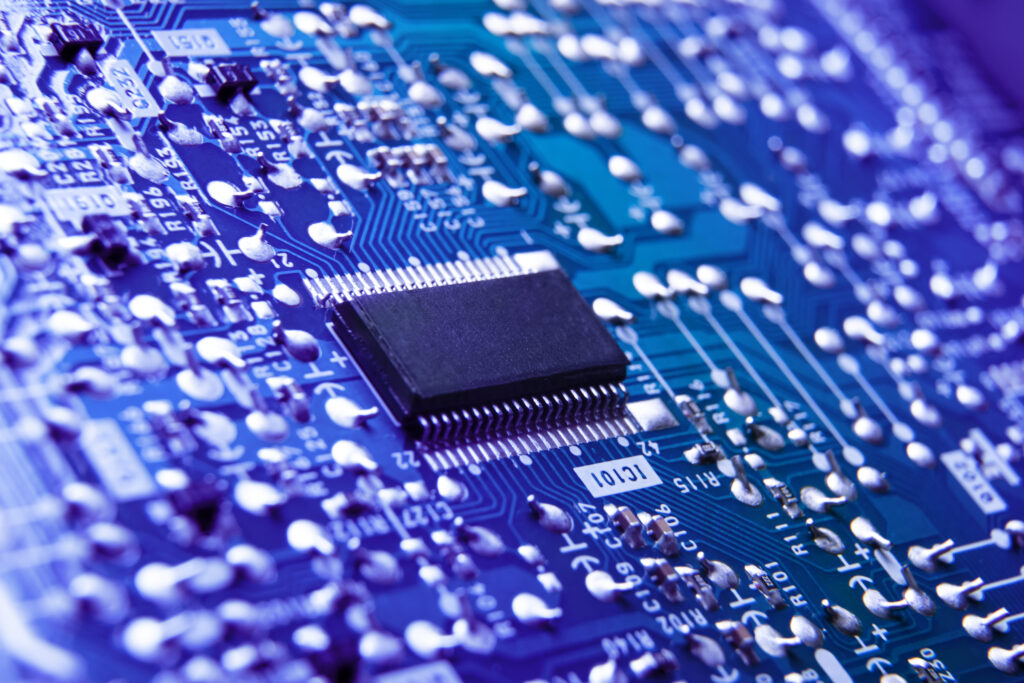Advanced Materials for Next-Generation Electronic Components
Advanced Materials for Next-Generation Electronic Components Revolutionizing Electronics with Advanced Materials The field of electronics is undergoing a transformative shift, driven by innovations in advanced materials. From graphene-based transistors to nano-material capacitors, these groundbreaking materials are reshaping the landscape of electronic components. Image Courtsey: Freepik By offering unprecedented performance, efficiency, and scalability, they […]

Advanced Materials for Next-Generation Electronic Components
Revolutionizing Electronics with Advanced Materials

The field of electronics is undergoing a transformative shift, driven by innovations in advanced materials. From graphene-based transistors to nano-material capacitors, these groundbreaking materials are reshaping the landscape of electronic components.
Image Courtsey: Freepik
By offering unprecedented performance, efficiency, and scalability, they promise to revolutionize industries like consumer electronics, telecommunications, automotive technology, and beyond.
Let us explore the exciting advancements in materials science, their applications in next-gen electronics, and the immense potential they hold for the future.
Cutting-Edge Materials in Electronics
Graphene: The Wonder Material
Graphene, a single layer of carbon atoms arranged in a hexagonal lattice, has become a cornerstone of advanced material research. Its exceptional properties—such as extraordinary electrical conductivity, mechanical strength, and flexibility—make it a preferred choice for next-generation electronic components.
- Applications in Electronics:
-
- Transistors: Graphene-based transistors surpass traditional silicon counterparts in speed and efficiency, supporting faster processing and reduced energy consumption.
- Flexible Displays: Graphene’s flexibility and transparency make it ideal for wearable technology and foldable devices, which are increasingly popular in consumer electronics.
- Challenges and Progress:
Despite its promise, graphene’s large-scale production and integration into existing technologies pose challenges. Researchers are actively working on cost-effective production methods to make graphene-based components more accessible.
Nano-Materials: Transforming Capacitors and More
Nano-materials, characterized by their nanoscale dimensions, are driving significant advancements in miniaturization and performance optimization.
- Nano-Capacitors:
Nano-material capacitors offer higher energy storage capacities while reducing component size. These capacitors are crucial for high-speed data processing and compact electronics, addressing the growing demand for efficiency in devices like smartphones and IoT gadgets. - Beyond Capacitors:
Nano-materials are also used in sensors, energy storage systems, and conductive inks, enhancing the functionality of various electronic components.
Ceramic Materials: Robust and Reliable
Ceramic materials are making their mark in power electronics due to their robustness and reliability.
- Heat Resistance and Durability:
Ceramics can withstand extreme temperatures and high voltages, making them essential for power transistors, automotive electronics, and industrial applications. - Eco-Friendly Alternatives:
Advanced ceramics are being developed as sustainable options, offering performance benefits without environmental drawbacks.
The Role of Advanced Materials in Emerging Technologies
Quantum Computing
Quantum computing, an emerging field that promises exponential increases in processing power, relies heavily on advanced materials. For instance, superconducting materials are used to create qubits, the building blocks of quantum computers, ensuring stable and efficient performance.
5G and Beyond
As 5G networks expand globally, advanced materials like gallium nitride (GaN) and silicon carbide (SiC) are being used to manufacture high-frequency components. These materials enhance signal transmission efficiency, reduce energy losses, and support faster data rates, which are critical for 5G-enabled devices.
Wearable and Flexible Electronics
The demand for wearable devices and flexible electronics continues to grow, with applications in health monitoring, fitness tracking, and augmented reality. Materials like graphene, organic semiconductors, and flexible polymers are at the forefront of this innovation, enabling lightweight, durable, and adaptable designs.
Challenges in Adopting Advanced Materials
While the potential of advanced materials is undeniable, their integration into mainstream electronics comes with hurdles:
- Cost:
Developing and scaling up advanced materials can be expensive, making them less accessible for mass production. - Compatibility:
Adapting existing manufacturing processes to incorporate new materials often requires significant investment in research and infrastructure. - Sustainability:
Balancing performance improvements with environmental impact is an ongoing challenge. Researchers are working to develop eco-friendly materials without compromising functionality.
Future Trends in Advanced Materials
Sustainable Materials
The push for environmentally friendly technologies is driving the development of biodegradable and recyclable materials for electronic components. These materials not only reduce waste but also align with global efforts to combat climate change.
Integration with AI and IoT
Advanced materials are poised to play a critical role in enhancing the performance of AI-driven devices and IoT ecosystems. From improving sensor accuracy to enabling energy-efficient computation, their applications are vast and varied.
Beyond Moore’s Law
As silicon-based technologies approach their physical limits, advanced materials offer a pathway to continue scaling device performance. Materials like graphene, carbon nanotubes, and 2D semiconductors hold the potential to outperform traditional silicon-based systems.
Key Takeaways
Benefits of Advanced Materials
- Performance: Faster, more efficient electronic components.
- Size Reduction: Miniaturization of devices without compromising functionality.
- Sustainability: Eco-friendly alternatives with lower environmental impact.
Applications in Everyday Life
From smartphones and laptops to electric vehicles and renewable energy systems, advanced materials are integral to modern technology. Their continued development promises even greater advancements in the years to come.
In conclusion, advanced materials like graphene, nano-materials, and ceramics are revolutionizing the electronics industry. These materials enable the creation of next-generation electronic components with unparalleled performance, efficiency, and adaptability. As research progresses and challenges are addressed, the integration of these materials will shape the future of technology, delivering innovations that were once thought to be science fiction.
The potential of these materials is vast, and their applications span a wide range of industries. By embracing these advancements, we are paving the way for a smarter, more connected, and sustainable world.


